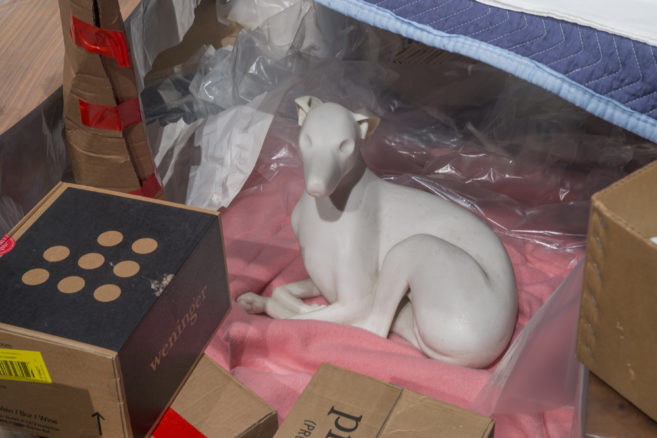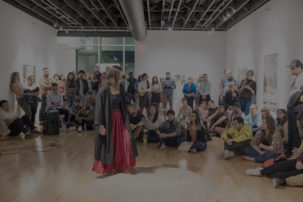Earlier this year, Nahed Mansour’s exhibition at Hamilton Artists Inc. invited viewers to witness the legacy of Little Egypt—the star of the most visited and profitable act at the Chicago World’s Fair in 1893. Little Egypt was one of the first belly dancers to perform in North America, and her moniker would later become the stage name of many imitators. While some American women were wearing corsets to abide by Victorian-era fashion norms, Little Egypt was showing her stomach and dancing on stage, making her a controversial figure at the fair. Her image was circulated and commodified, performed and marketed continuously in the West—perpetuating Orientalist visions of racialized and sexualized women.
Mansour, the Egyptian multidisciplinary artist, curator, programmer and arts administrator based in Toronto, collected and mapped various iterations of Little Egypt for her exhibition “Little Egypt Doesn’t Dance Here Anymore.” Mansour’s installation presented a constellation of Little Egypt across media, in archival images and a record titled How to Belly Dance For Your Husband, and through the transposed image of Little Egypt on 100 one-dollar bills. Mansour’s exhibition treads between the specific and the ambiguous, tracking Little Egypt’s debut in 1893 and her ongoing—and persistent—manifestations in pop culture. The work offers a witty and important reminder of how revisiting archives can reveal the deeper stories embedded in objects and help us understand how performance lives beyond a stage.
Sarah Sarofim: Your studio and curatorial practices often look to found footage. Where does your interest in this material come from?
Nahed Mansour: I grew up in an American compound in Saudi Arabia, and broadcast television was limited in my formative years. I mostly watched classical Egyptian films until American satellite television was brought in during the Gulf War in 1990. By then, I could argue for control of the remote, and I had learned how to press record on my family’s VHS. That’s really when I began to archive. I had an impressive VHS collection full of tapes with short segments of different shows and films in English and Arabic. I loved how recording live TV gave me the ability to rewatch it. My brothers and I often recorded over each other’s tapes, so the tapes turned into a collage of different people’s favourite moments—comedy, music, sports, dance. We were basically programming our very own variety show. For the past 10 years, I’ve incorporated found footage in almost all of my video works. While I sometimes use my childhood VHS collection or home videos, most often I am pulling footage from YouTube. There is an ephemeral quality to these videos that I love—YouTube videos I may want to incorporate in my works sometimes get taken down or deleted without any notice. Losing access to archives is part of the process and reminds me of the risk you take when you record on VHS—knowing that you are likely recording over someone else’s favourite scene, and that what you are recording will likely be recorded over. I’m into searching through and building archives that aren’t necessarily protected.
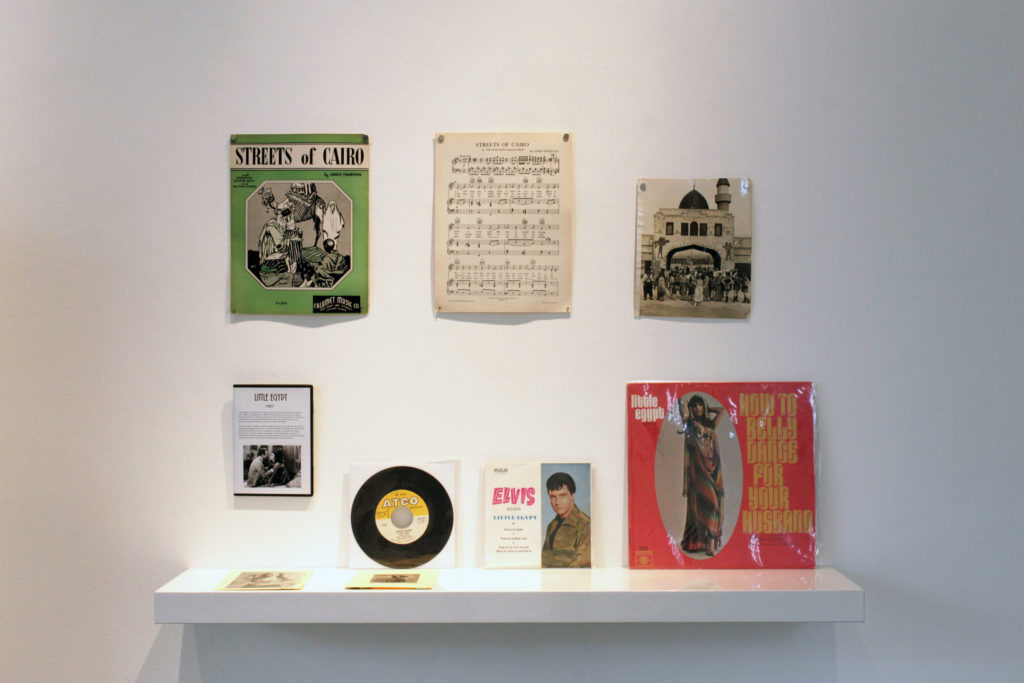
Nahed Mansour, “Little Egypt Doesn't Dance Here Anymore,” 2020. Exhibition view at Hamilton Artists Inc. Photo: Abedar Kamgari.


SS: This difference between a historical event and its subsequent circulation is something you explore in “Little Egypt Doesn’t Dance Here Anymore.” How were you thinking about that relation?
NM: My parents and grandparents really admired the talents of Egyptian musicians, actors and dancers, especially those who could do it all, like Sherihan, Soad Hosny or Abdel Halim Hafez. I would watch these iconic televised performances and then try to recreate the costumes, sing along to the music or learn the choreographies. So I paid equal attention to the performance and to the materials that constituted their production. In “Little Egypt Doesn’t Dance Here Anymore,” I wanted to highlight both Little Egypt the performer and her namesake products that continue to be marketed and sold globally. Actually, her name—Little Egypt—had no relationship to the dancer’s origins; she wasn’t from Egypt. Instead, Egypt was a place that Americans would recognize, and the name built on the recognition that played to Orientalist imaginaries circulating in American popular culture. I’m in awe with how resilient Little Egypt’s image is. Her image continues to be circulated and commodified today, over 100 years later. It really speaks to how influential that initial performance was toward the desires and fantasies of everyday Americans. And in another way, it also speaks to Little Egypt’s ability to uniquely represent herself—her many selves.
SS: What was the process of finding and collecting her many selves like?
NM: I’ve been intermittently working on “Little Egypt Doesn’t Dance Here Anymore” since 2009, so it has taken 10 years to complete. I tend to work slowly on my art practice because I’m balancing motherhood, work and life. My art practice happens late at night or early in the morning, which, not coincidentally, is when I have time to chill out and watch YouTube. For this project, I spent about eight years collecting traces of Little Egypt, reading articles or blog posts about her to inspire the direction of my next search. When I first realized that Little Egypt premiered at the Chicago World’s Fair in 1893, I decided to look her up on YouTube. I was surprised to find a minute-long film documenting an early Little Egypt, Fatima Djemille. The short film [Fatima’s Coochie Coochie Dance, 1896] was shot by the Edison Manufacturing Company. It’s like a study of how her body moved, focusing, of course, on her belly’s movements. Halfway through this clip, these bars that remind me of musical-bar lines appear and cover her stomach. Historically, it’s the very first censored film because of Little Egypt’s disregard for Victorian values—like covering one’s body and restricting its movements. That clip didn’t make it into my exhibition, but the critiques of controlling Little Egypt’s body and agency do. A video I found on YouTube that does make it into my work is Elvis’s performance of the song “Little Egypt (Ying-Yang)” [in the 1964 film Roustabout]. The song was first recorded by the Coasters [in 1961], and I was really disturbed by the lyrics. The song describes the male singer going to the fair; he sees this woman dancing the “hoochie coochie”; he falls in love with her; and in the last verse, he boasts about how she no longer dances on the stage, because instead she’s mopping, shopping and taking care of their seven kids. I thought okay, wow, the song touches on the male gaze, female sexuality and patriarchy—it’s celebrating the singer who moves Little Egypt from the open space of public consumption into the guarded private space. That narrative reminded me of American imperialism in the Middle East, where militaries excuse war by saying they are meant to protect women.
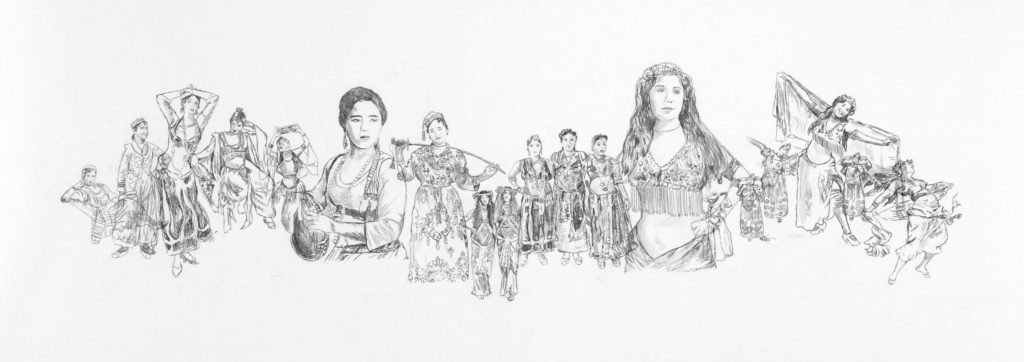 Nahed Mansour, Streets of Cairo – Middle East, 2018. Carbon transfer drawing. 61 x 183 cm.
Nahed Mansour, Streets of Cairo – Middle East, 2018. Carbon transfer drawing. 61 x 183 cm.
SS: Is this how the title of the show came into play?
NM: Yes, I pulled the title of my exhibition “Little Egypt Doesn’t Dance Here Anymore” from the song lyrics. The line was important to me because I started to wonder if she doesn’t dance here anymore, then where is she? That’s the question I’m hoping viewers ask themselves. There are probably 150 different representations of Little Egypt in the exhibition, so she clearly is somewhere. The process of collecting her traces over many years revealed that she is actually everywhere. I sourced the materials in the show from national and international sellers on eBay, online photo archives, record stores and medical journals. So, even if Little Egypt doesn’t dance here anymore, she lives in all these objects and materials that continue to be globally distributed and circulated. I thought that was really interesting. Searching for her, knowing that I wouldn’t find her and finding all of these different materials was the best part of the process. I love that she can’t be captured. Unlike the singer of “Little Egypt (Ying-Yang),” I wasn’t searching for Little Egypt with the intention of making her mine. I wanted to find her traces and let people know they’ve probably seen and heard her traces by consuming popular culture too. It’s as if Little Egypt is always just around the corner, hiding and reappearing on her own accord.
SS: It’s interesting that you ground the exhibition in 1893 only to end up with a big network of variations and multiples of Little Egypt that just float in pop culture, performing and being performed.
NM: Yes, exactly, because several dancers claimed to be Little Egypt, and her moniker continues to be used. Actually, one of my favourite Little Egypts is Angelina Altishin, a 1980s wrestler/actress with GLOW [Gorgeous Ladies of Wrestling]. Because the name Little Egypt is so widely used, I never thought of her in the singular—she was always many Little Egypts. That gave her so much power. She wasn’t one person whose popularity could rise and fall; her popularity and influence is exponential, she multiplies and spreads. In my one-dollar bills piece, Importing Little Egypt, I make clear the parallels that exist between Little Egypt’s many performances and their ability to multiply for profit. Each of the 100 one-dollar bills in that work has a drawing on it that depicts a different Little Egypt from between 1893 and the 1990s. I would find a photograph or film still showcasing one of the dancers, print it, photocopy it and then trace it on top of carbon paper. So each of the bills has a carbon-transfer drawing of a Little Egypt. The images of these Little Egypts move from an imitator’s performance, to photographic documentation of that performance, to the photo being uploaded online, printed, photocopied and then traced as a carbon transfer. Reproductions of reproductions, and traces of traces. I transfer these images of different Little Egypts onto an American dollar bill using the Eye of Providence as the centre point. I’m referencing the gaze, and how American perceptions of Little Egypt have caused her image to circulate widely. Her image continues to be consumed and commodified, and her image is profited from, despite the initial impulse to censor her.
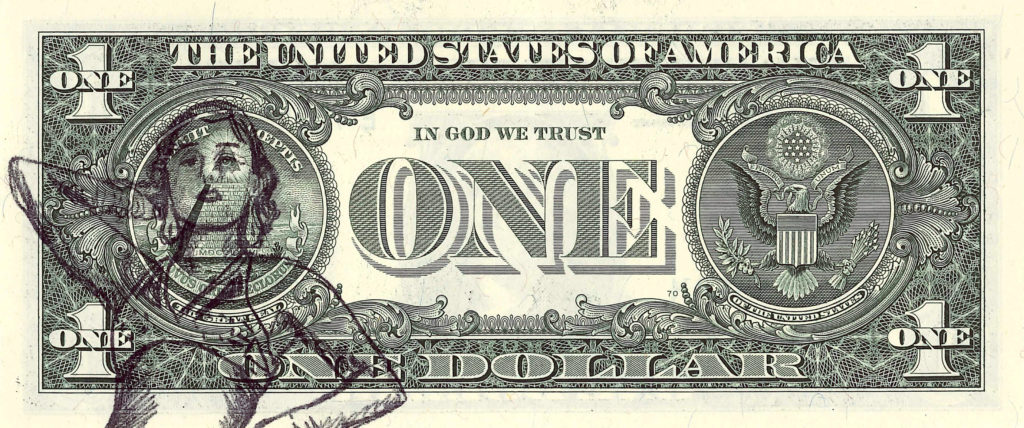 Nahed Mansour, Importing Little Egypt (detail), 2018–19. 100 Carbon transfer drawings on 100 $1 bills.
Nahed Mansour, Importing Little Egypt (detail), 2018–19. 100 Carbon transfer drawings on 100 $1 bills.
SS: The drawings seem to be your most explicit and direct intervention in the show, whereas most of the other materials are archival. How were you thinking of your own role in relation to Little Egypt’s story?
NM: The exhibition, which holds so many different materials from different places and times, is really connected to my early VHS-recording aesthetic. I had all these objects, films, videos, songs, books, photographs and photocopies referencing Little Egypt, and I knew they wouldn’t all be able to fit on a single VHS tape. Again, I really took the song “Little Egypt” and the line I used as the exhibition title as sort of “what not to do.” I didn’t want to capture her in any way, which made me question what my intervention as an artist was. I knew early on that I would incorporate material culture in the exhibition, but what I later realized was that to make the show my own, I needed to focus on the social and political histories surrounding Little Egypt. That’s why in my works there is a critique of American hypocrisy, conservatism, patriarchy, imperialism and white feminism. That’s my voice. Though I hope that viewers also see that I’m into humour and the absurd. I am so fascinated by human anatomy. I knew I wanted to include a medical drawing of abdominal muscles. It’s like, wow, just because this specific dancer moved these specific muscles, all hell broke loose. How funny and absurd is that?

